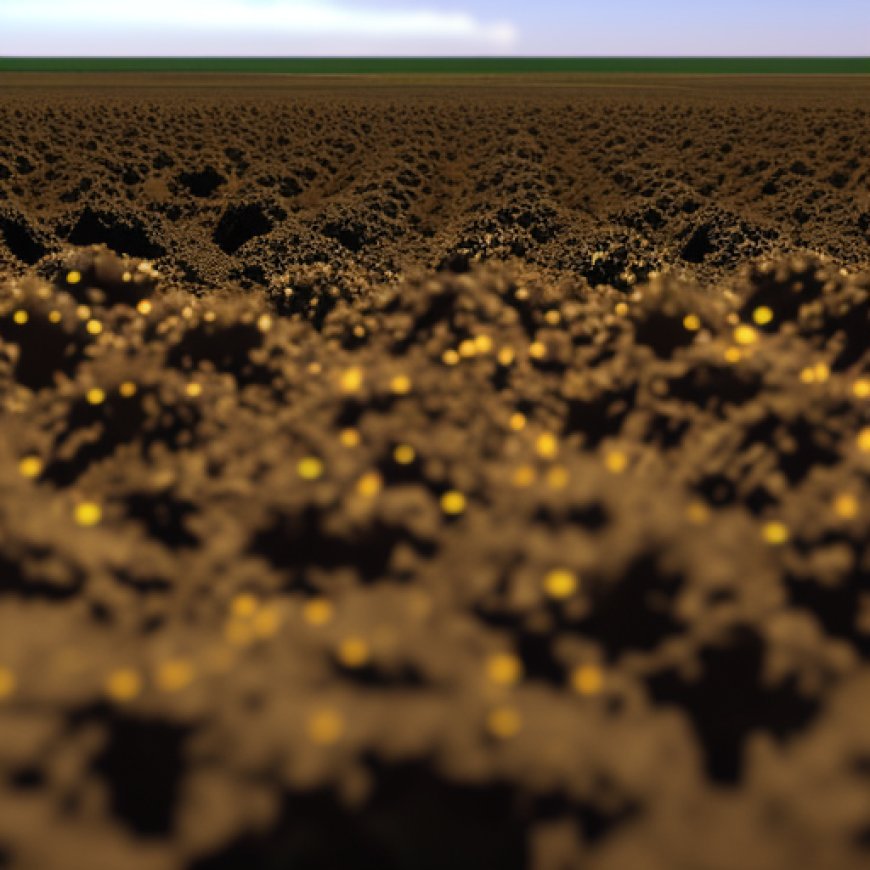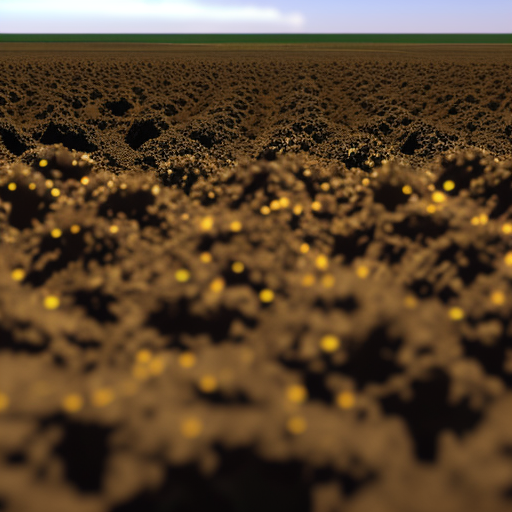Nebraska Soil Health School will focus on dryland cropping system
Nebraska Soil Health School will focus on dryland cropping system Scottsbluff Star Herald


The University of Nebraska-Lincoln to Host Nebraska Soil Health School
Introduction
The University of Nebraska-Lincoln (UNL) will host a Nebraska Soil Health School, sponsored by the USDA Natural Resources Conservation Service (NRCS), on Wednesday, April 24, at UNL’s High Plains Ag Lab (HPAL), 3257 Rd. 109, Sidney.
Event Details
Registration and refreshments will begin at 7:30 a.m., followed by a welcome from the event’s organizer, Bijesh Maharjan, UNL associate professor.
Purpose of the Event
Following last year’s successful Soil Health School events across the state, this year, presenters plan to organize events specific to issues facing growers in a given area, Maharjan said. The Nebraska Soil Health Schools are designed to build upon soil-related knowledge and practices for growers, crop consultants, ag professionals, and others. The HPAL event will focus on soil health topics in relation to dryland cropping systems.
Presentations
- Soil Health – Byproduct of improved soil and crop management practices: Gary Peterson, CSU professor emeritus.
- Impact of tillage, biochar and cover crops on soils at the High Plains Ag Lab: Cody Creech, UNL associate professor and Fenster Professor of Dryland Agriculture.
- Soil health measurement and carbon market: Bijesh Maharjan with Jessica Groskopf, UNL extension educator economics.
- Impacts of tillage systems, crop residues and cover crops on soil water and yield in semi-arid dryland systems: David Nielsen, retired USDA Agricultural Research Service (ARS) research agronomist.
- NRCS soil health demonstrations and live rainfall simulator: Carlos Villarreal, USDA-NRCS state soil scientist and Riley Hackbart, soil scientist, USDA-NRCS.
- High Plains Ag Lab research plot tours.
Keynote Speakers
The soil health school is fortunate to have two prominent keynote speakers at this event. Nielsen and Peterson dedicated their careers to finding management solutions to address dryland cropping issues. They are well known among farmers, crop consultants and scientists throughout the Great Plains and other semi-arid regions of the world for their work on improving cropping system water use efficiency and profitability while protecting the soil resource.
Importance of Soil Water Management
Nielsen said, “It is important for agricultural producers to understand the relationship between yield and available soil water at planting, and how to increase AWP with no-till management practices. This knowledge can aid in designing profitable crop rotations that are more intensive, lower fallow frequency than the wheat-fallow system.”
Registration and Information
To attend the event, pre-register at unlcba.az1.qualtrics.com/jfe/form/SV_3lr2CyTPO8AkWIC. There is no fee to attend, and a full lunch will be provided. Certified crop advisor Continuing Education Units will be offered.
Additional Information
The full agenda can be found online: preec.unl.edu/nebraska-soil-health-school-0. For more information or questions, email nheldt@unl.edu or call 308-632-1230.
SDGs, Targets, and Indicators
1. No Poverty
- Target 1.4: By 2030, ensure that all men and women, in particular the poor and the vulnerable, have equal rights to economic resources, as well as access to basic services, ownership, and control over land and other forms of property, inheritance, natural resources, appropriate new technology, and financial services, including microfinance.
- Indicator 1.4.2: Proportion of total adult population with secure tenure rights to land, with legally recognized documentation and who perceive their rights to land as secure, by sex and by type of tenure
2. Zero Hunger
- Target 2.4: By 2030, ensure sustainable food production systems and implement resilient agricultural practices that increase productivity and production, that help maintain ecosystems, that strengthen capacity for adaptation to climate change, extreme weather, drought, flooding, and other disasters, and that progressively improve land and soil quality.
- Indicator 2.4.1: Proportion of agricultural area under productive and sustainable agriculture
15. Life on Land
- Target 15.3: By 2030, combat desertification, restore degraded land and soil, including land affected by desertification, drought, and floods, and strive to achieve a land degradation-neutral world.
- Indicator 15.3.1: Proportion of land that is degraded over total land area
Analysis
The article discusses the Nebraska Soil Health School, which focuses on soil health topics in relation to dryland cropping systems. Based on the content of the article, the following SDGs, targets, and indicators can be identified:
1. No Poverty
The issue of access to economic resources and land ownership is indirectly connected to the article. The event aims to provide knowledge and practices for growers and professionals, which can contribute to poverty reduction and equal rights to economic resources.
2. Zero Hunger
The event’s focus on sustainable food production systems and resilient agricultural practices aligns with the target of ensuring sustainable food production systems and implementing resilient agricultural practices.
15. Life on Land
The event’s emphasis on soil health and restoration aligns with the target of combating desertification, restoring degraded land and soil, and achieving a land degradation-neutral world.
The specific targets and indicators mentioned in the article are as follows:
Target 1.4: By 2030, ensure that all men and women, in particular the poor and the vulnerable, have equal rights to economic resources, as well as access to basic services, ownership, and control over land and other forms of property, inheritance, natural resources, appropriate new technology, and financial services, including microfinance.
- Indicator 1.4.2: Proportion of total adult population with secure tenure rights to land, with legally recognized documentation and who perceive their rights to land as secure, by sex and by type of tenure
Target 2.4: By 2030, ensure sustainable food production systems and implement resilient agricultural practices that increase productivity and production, that help maintain ecosystems, that strengthen capacity for adaptation to climate change, extreme weather, drought, flooding, and other disasters, and that progressively improve land and soil quality.
- Indicator 2.4.1: Proportion of agricultural area under productive and sustainable agriculture
Target 15.3: By 2030, combat desertification, restore degraded land and soil, including land affected by desertification, drought, and floods, and strive to achieve a land degradation-neutral world.
- Indicator 15.3.1: Proportion of land that is degraded over total land area
SDGs, Targets, and Indicators
| SDGs | Targets | Indicators |
|---|---|---|
| No Poverty | Target 1.4: By 2030, ensure that all men and women, in particular the poor and the vulnerable, have equal rights to economic resources, as well as access to basic services, ownership, and control over land and other forms of property, inheritance, natural resources, appropriate new technology, and financial services, including microfinance. | Indicator 1.4.2: Proportion of total adult population with secure tenure rights to land, with legally recognized documentation and who perceive their rights to land as secure, by sex and by type of tenure |
| Zero Hunger | Target 2.4: By 2030, ensure sustainable food production systems and implement resilient agricultural practices that increase productivity and production, that help maintain ecosystems, that strengthen capacity for adaptation to climate change, extreme weather, drought, flooding, and other disasters, and that progressively improve land and soil quality. | Indicator 2.4.1: Proportion of agricultural area under productive and sustainable agriculture |
| Life on Land | Target 15.3: By 2030, combat desertification, restore degraded land and soil, including land affected by desertification, drought, and floods, and strive to achieve a land degradation-neutral world. | Indicator 15.3.1: Proportion of land that is degraded over total land area |
Behold! This splendid article springs forth from the wellspring of knowledge, shaped by a wondrous proprietary AI technology that delved into a vast ocean of data, illuminating the path towards the Sustainable Development Goals. Remember that all rights are reserved by SDG Investors LLC, empowering us to champion progress together.
Source: starherald.com

Join us, as fellow seekers of change, on a transformative journey at https://sdgtalks.ai/welcome, where you can become a member and actively contribute to shaping a brighter future.







